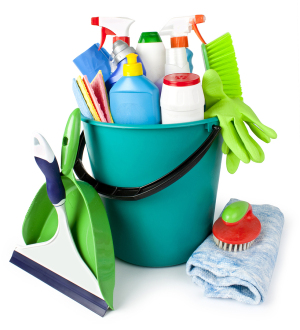by
Lauren Dubinsky, Senior Reporter | February 10, 2021
From the January/February 2021 issue of HealthCare Business News magazine
Using proper cleaning agents and procedures on medical equipment is always imperative, but it became even more important when COVID-19 hit. Early on in the pandemic, Huntington Hospital in Los Angeles dealt with a slew of challenges — one of them being disinfectant shortages.
Katie Jones, interim manager of infection prevention and control at the hospital, spoke during AAMI’s Summer Learning Series about steps the hospital took to overcome those hurdles.
Due to the pandemic, the hospital started utilizing new types of equipment including powered air purifying respirators (PAPRs) and associated PAPR hoods. Since they had to use their inventory of quaternary and alcohol-based disinfectant wipes for personal protective equipment (PPE), they needed to find another disinfectant to clean equipment and environmental surfaces near suspected or confirmed COVID-19 patients.



Ad Statistics
Times Displayed: 2157
Times Visited: 29 Keep biomedical devices ready to go, so care teams can be ready to care for patients. GE HealthCare’s ReadySee™ helps overcome frustrations due to lack of network and device visibility, manual troubleshooting, and downtime.
“Unfortunately, the most readily available item at that point would be bleach wipes, but we know that they are destructive to surfaces and equipment over time,” said Jones. “We were stuck between a rock and a hard place because that’s all we had. We couldn’t use the bleach wipes on PPE but we could use it on the equipment.”
Eventually the hospital’s Environmental Services (EVS) department was able to provide them with a wider distribution of the liquid quaternary-based disinfectant and disposable dry wipes, but not before some damage was done.
“It did lead to some damage that we were luckily able to mitigate eventually, but it was a hard decision and a really short amount of time to figure out how to control the spread of the virus and these cohort units, and to keep everything clean,” said Jones.
With ECRI’s assistance, they were able to research UV-disinfection equipment that was available on the market to find something that best met their need for additional technology to complement what their EVS staff was already doing.
Jones explained that “UV disinfection doesn’t replace your manual cleaning and disinfection procedures,” but instead functions as a supplement to that.
Using the right cleaning agent or methods is vital since medical devices exposed to unapproved methods can lead to premature deterioration and failure of the equipment, noted Izabella A. Gieras, director of clinical technology at Huntington Hospital. That can result in device performance and safety issues.
In addition, damaged equipment cannot be cleaned or disinfected effectively. Rust, degraded plastic or broken plastic on equipment is considered an infection control failure because it cannot be cleaned.

